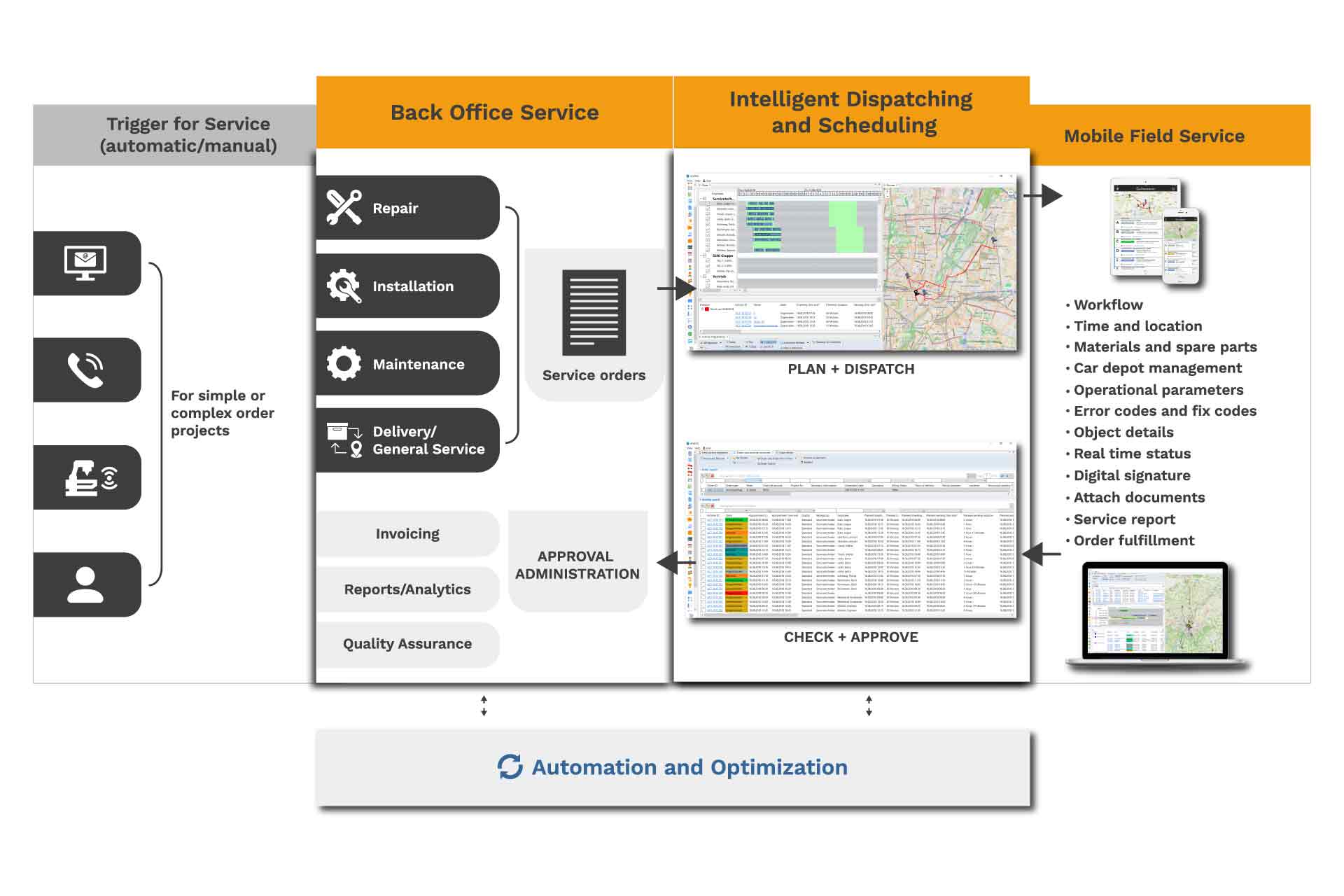

Second, they can predict the tools and parts that a rep will need. First, they can state more precise arrival times for technicians. Systems can increase customer satisfaction in three ways. These systems can schedule appointments more densely and reduce travel times through intelligent routing.
SERVICE SCHEDULING SOFTWARE FREE MANUAL
Manual systems needed to leave large “windows” for appointments and allow ample time between scheduled stops. One of the big costs is the actual scheduling of calls. The second problem is more typical of enterprise software proper implementation, change management and adoption is required for customers to realize the true benefits. The first is obvious: there is a potential to over-schedule reps, which decreases both their effectiveness and level of job satisfaction, and also decreases customer satisfaction since appointments are missed. This can dramatically reduce mileage and consequently fuel costs. It calculates the most efficient way for sales agents to drive to their appointments.

Intelligent route planning is a feature of most systems. Companies can use this information to more accurately manage part inventories to reduce costs. Systems can analyze history files to predict which parts will fail on what schedule. Third, they can allow the customer to pick the most convenient appointment time.
SERVICE SCHEDULING SOFTWARE FREE FULL
Click here for the full report.īenefits and Potential Issues Reduce scheduling costs Recently, we analyzed a random sample of these interactions with companies evaluating field service systems to uncover the following trends. These buyers work for small businesses moving beyond Microsoft Outlook, spreadsheets or even whiteboards and sticky notes, and want to add FSM capabilities for planning orders and tracking customer satisfaction.Įvery year, Software Advice talks to hundreds of field service software buyers, which provides us unparalleled insight into their motivations for investing in new technology. These buyers may have multiple fleets and they place a premium on integrating information across units and with the customer support organization. These buyers work for large organizations. These buyers have special requirements for passing work requests, tracking request fulfillment and tracking customer satisfaction.Įnterprise buyers. These buyers work for firms that contract out work. They have straightforward needs which are addressed by a wide range of providers.Ĭontract buyers. These buyers work for firms that maintain their own unit. We believe 90 percent or more of buyers fall into one of the following categories:ĭirect buyers. Some solutions also focus exclusively on one function, service dispatch software, for example.Ĭompanies needing a more sophisticated maintenance management system with features like equipment and preventive maintenance should review our CMMS buyers guides.īefore starting your research, you’ll need to assess what kind of buyer you are.

Customer support systems may provide scheduling and inventory management or may integrate to a complete system. HD systems provide applications for trouble ticketing and directed problem resolution but do not offer field-related functionality.

In the customer support spectrum, these systems expand on help desk (HD) systems and overlaps customer support systems. Managers can schedule outside agents and resources, track customer history and manage work orders.Īdvanced field service solutions feature mobile support, failure analysis, RMA management, voice-generated customer appointment reminders and project management. For representatives, it provides schedules, routes, customer information and information regarding necessary supplies and parts. This mobile field service software category helps companies schedule and track outside operations. If you have ever waited from noon to 6 pm for a representative to appear, you know the importance of a good system.


 0 kommentar(er)
0 kommentar(er)
